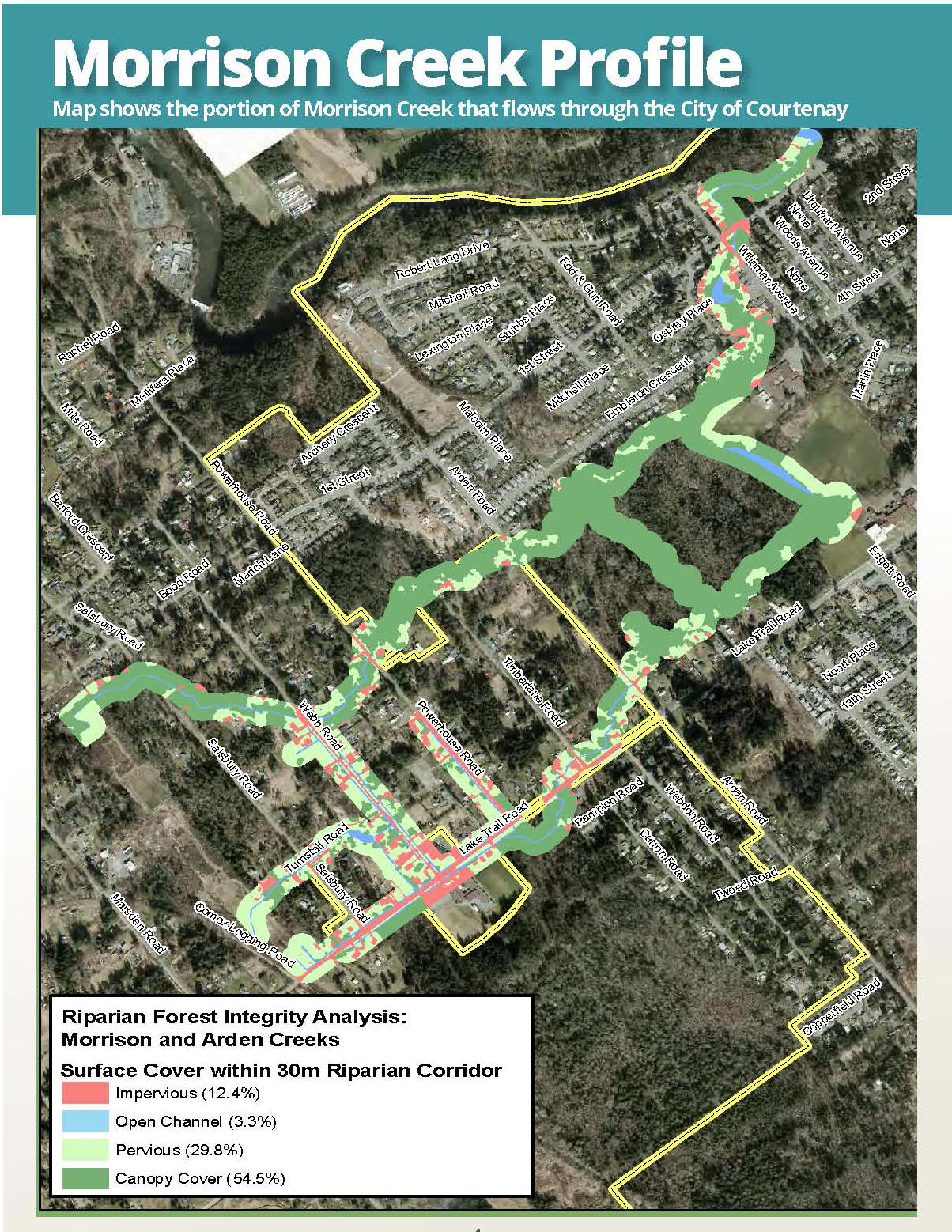A Tale of Two Urbanizing Watersheds in the City of Courtenay
State of the Environment Reporting
The Province of British Columbia describes “State of Environment Reporting” as the presentation of unbiased information relating to the environment. Environmental reporting takes scientific information and makes it accessible to non-technical audiences. The City of Courtenay is one of four local governments featured by the Province on its Environmental Monitoring BC website.
 “State of the Environment and other similar ‘sustainability audits’ are increasingly popular tools for communicating sustainability goals and performance to the public,” explains Nancy Hofer, Environmental Planner with the City of Courtenay. “In 2013, the City issued our first State of the Environment Report with targets for air quality, water consumption, transportation, land use, waste, and energy.
“State of the Environment and other similar ‘sustainability audits’ are increasingly popular tools for communicating sustainability goals and performance to the public,” explains Nancy Hofer, Environmental Planner with the City of Courtenay. “In 2013, the City issued our first State of the Environment Report with targets for air quality, water consumption, transportation, land use, waste, and energy.
“The annual report series is our way of sharing information on the ways that the City works with the environment on a daily basis; as well, it draws attention to the role of citizens in contributing to the health and quality of life of our community. The format is brochure style with engaging images and a succinct storyline.”
“Imagine what we could accomplish if each one of us helped to restore the watershed in which we live,” says Nancy Hofer, Environmental Planner, City of Courtenay
“Healthy natural heritage systems are the foundation for a sustainable community. This year we have taken a look at the ecological systems that connect our neighbourhoods and communities – our backyard streams,” states Nancy Hofer.
“Our watershed ecosystems benefit us all. Often the services they provide are overlooked and undervalued. Through innovative planning and wise stewardship, we can sustainably manage our local streams for the benefit of present and future generations. The 2014 State of the Environment Report is a tale of two urbanizing watersheds: Morrison Creek in West Courtenay and Glen Urquart Creek on Courtenay’s east side.”
“Morrison Creek crosses the Village of Cumberland, the Comox Valley Regional District and Courtenay, and involves many private landowners. Effective management requires coordination across boundaries. This creek is home to the rare Morrison Creek Lamprey, found nowhere else in the world! The recovery plan for this endangered species lists urban development and land use changes in the watershed as the major threat to this unique species.”
“Glen Urquhart Creek originates in a public park, is highly urbanized (residential) in its upper reaches and drains through agricultural lands before reaching the K’omoks Estuary.”
Individual Actions Can Make a Difference
“We have looked at how the land cover is changing in the riparian areas adjacent to the creeks as a measure of stream health, and learn what this means. This has been done in collaboration with stewardship groups. We have identified challenges and opportunities. We have highlighted the role that each resident can play in restoring their piece of the riparian area.” explains Nancy Hofer.
“Riparian cover is important because it provides food and shade for fish and other species. The cooling effects also benefit humans and wildlife. Roots in riparian areas also protect adjacent properties from erosion and possible flooding.”
“Invasive species plant removal and replanting with native species as well as being mindful of storm drain runoff, which flows into the creeks, are actions that can be undertaken by creekside residents.”
“The individual actions of citizens may seem small, yet the achievement of sustainability goals can only be attained through collective effort. Working together, we can make a difference. Imagine what we could accomplish if each one of us helped to restore the watershed in which we live.”
To Learn More:
Click on 2014 State of the Environment Report to download and read “A Tale of Two Urbanizing Watersheds”.




